Hummingbirds, with their vibrant feathers and remarkable agility, are not only known for their ability to hover and feed on nectar but also for their impeccable cleanliness. Maintaining their feathers and beaks in pristine condition is crucial for their survival and flight performance.
In this guide, we will delve into how do hummingbirds clean themselves. From preening and bathing to sunning and bill wiping, we will explore the various methods these tiny avian wonders employ to ensure they stay clean and well-groomed.
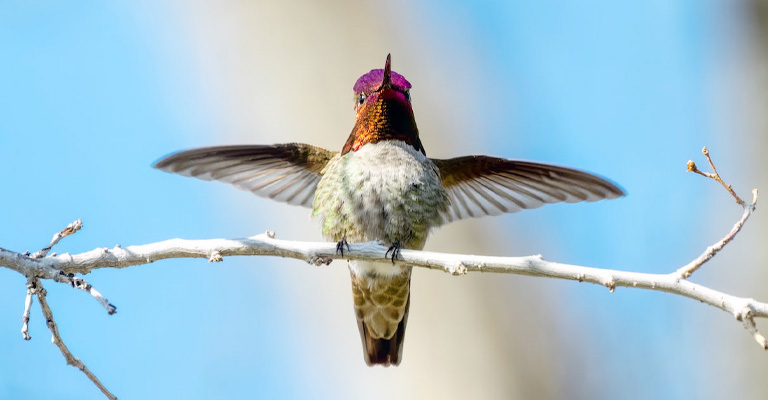
How Do Hummingbirds Clean Themselves?
Hummingbirds are known for their agility and vibrant appearance, but have you ever wondered how they keep themselves clean and well-groomed?
Here are some methods hummingbirds use to maintain their impeccable hygiene:
Preening
Hummingbirds engage in preening, which involves using their beaks to carefully align and clean their feathers. They run their beaks along their feathers, removing dirt, dust, and any parasites that may be present.
Bathing
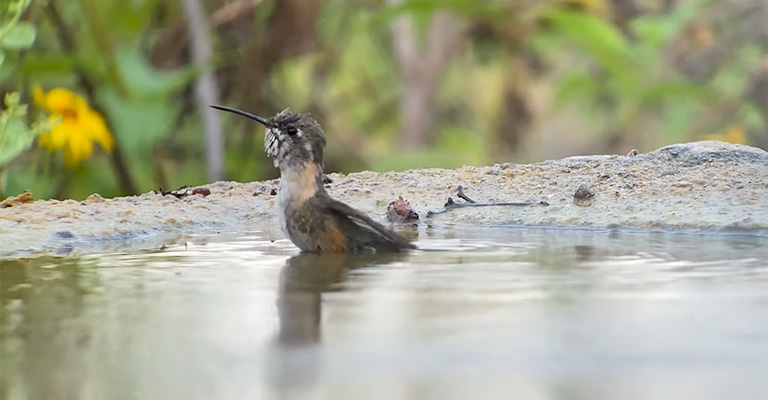
Hummingbirds enjoy bathing in water to keep their feathers clean and remove any debris. They may hover near misters, fly through water droplets, or bathe in shallow pools or bird baths.
Bathing helps them maintain their feathers’ waterproofing and allows for better flight performance.
Wing Stretching
After bathing or during preening, hummingbirds frequently stretch and fan out their wings. This action helps realign the feathers, ensuring they are in their optimal positions for flight and maintaining their overall feather health.
Bill Wiping
Hummingbirds often wipe their bills on perches or branches to remove any excess nectar or residue. This behaviour helps keep their bills clean and prevent the accumulation of sticky substances.
Sunning
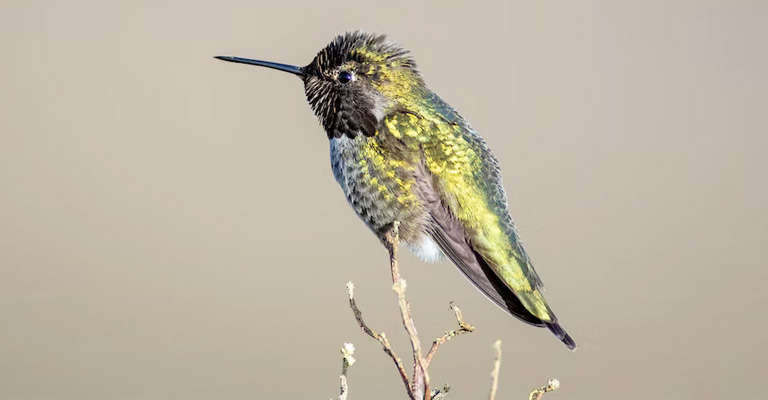
Hummingbirds occasionally engage in sunning behaviour, where they perch in direct sunlight and spread their wings. The sunlight helps dry out any damp feathers, and the UV rays can have a disinfecting effect, reducing the growth of bacteria and parasites.
Scratching
Hummingbirds may use their feet or beaks to scratch areas that are hard to reach during preening. This scratching behaviour helps relieve any itching or discomfort and ensures their feathers and skin remain in good condition.
Feather Dusting
Hummingbirds may engage in “feather dusting” by rubbing their feathers against leaves or soft surfaces. This action helps remove any fine particles or debris that may have adhered to their feathers.
Anting
Although less common in hummingbirds compared to other bird species, some hummingbirds engage in anting. Anting involves rubbing or sitting on ants or anthills.
It is believed that the formic acid secreted by the ants acts as a natural insecticide, helping to control parasites on their feathers.
Flight Grooming
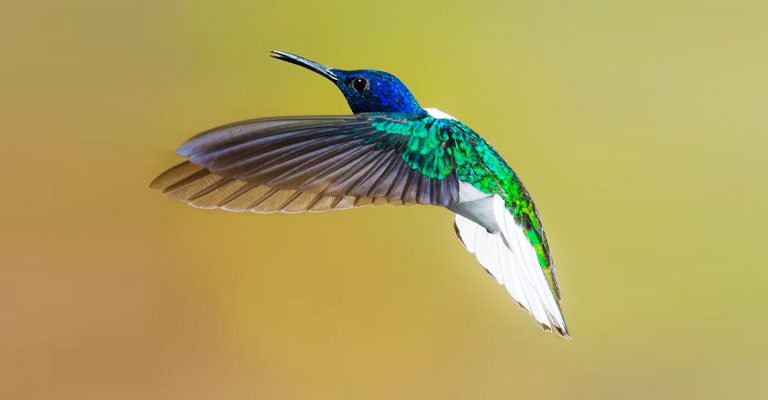
Hummingbirds often perform in-flight grooming, where they twist and turn in mid-air, using the airflow to help align and clean their feathers. This grooming method allows them to reach areas that are difficult to access while perched.
Dust Bathing
In addition to water bathing, hummingbirds may also engage in dust bathing. They roll around or flop onto dusty patches of ground or dry soil, fluffing their feathers and allowing the dust to absorb excess oil and moisture.
Mutual Grooming
Some hummingbird species engage in mutual grooming, where they groom each other’s feathers. This behaviour strengthens social bonds within the species and helps maintain their feather cleanliness.
By employing these various grooming techniques, hummingbirds ensure their feathers are in optimal condition for efficient flight, thermoregulation, and overall health.
Do Hummingbirds Drink From Bird Baths?
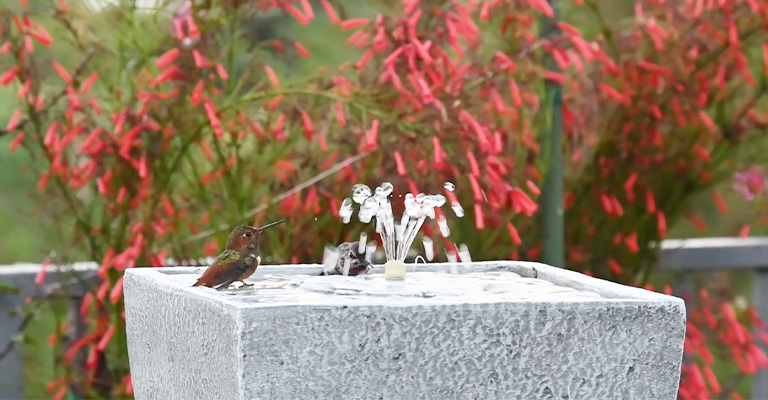
Hummingbirds are primarily known for their ability to hover and feed on nectar from flowers, but they can also drink from bird baths under certain circumstances. Here are some points to consider regarding hummingbirds and bird baths:
Water Source
Hummingbirds are attracted to sources of water, including bird baths. However, their preference for water is often based on the size, depth, and availability of other natural water sources. Bird baths with shallow water levels are more suitable for hummingbirds, as they allow the birds to safely approach and access the water.
Perching Options
Hummingbirds are not strong swimmers and prefer to have perching options while drinking water. Bird baths with nearby perches, such as nearby branches or small twigs, provide the necessary support for hummingbirds to rest and drink comfortably.
Movement and Ripples
Hummingbirds are attracted to the sight of moving water. If the bird bath has a water feature, such as a small fountain or mister, it can catch the attention of hummingbirds and entice them to drink.
The movement and ripples in the water can resemble the shimmering effect of nectar-rich flowers, making it more appealing to these tiny birds.
Hydration and Cooling
Hummingbirds may visit bird baths to fulfil their hydration needs, especially during hot and dry weather. They may drink small amounts of water to replenish their fluids and regulate their body temperature.
Bird baths can provide a refreshing spot for hummingbirds to cool down and rehydrate.
Nearby Vegetation
Hummingbirds are more likely to visit bird baths near vegetation or flowers. The presence of nearby plants provides a sense of familiarity and makes the bird bath a more attractive and convenient option for drinking and grooming.
While not all hummingbirds will drink from bird baths, providing a suitable and inviting bird bath with shallow water, perching options, and movement can increase the chances of attracting these delightful birds.
It is important to keep the bird bath clean, change the water regularly, and avoid using chemicals or additives that could be harmful to hummingbirds.
Do Hummingbirds Have An Immune System?
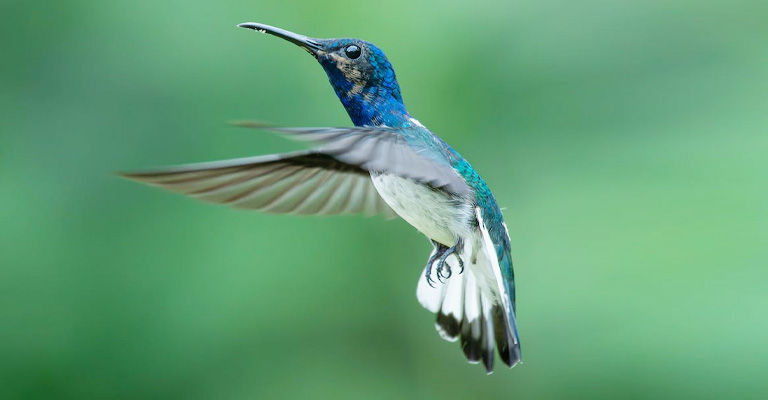
Yes, hummingbirds have an immune system that plays a crucial role in protecting their health and well-being. Here are some key points regarding the immune system of hummingbirds:
Defence Mechanisms:
Hummingbirds possess a range of defence mechanisms within their immune system to protect against pathogens and maintain their overall health. These mechanisms include physical barriers, such as their skin and feathers, as well as specialized cells and molecules that recognize and neutralize potential threats.
Innate Immunity:
Hummingbirds have an innate immune system that provides a rapid response to pathogens without prior exposure. This includes physical barriers like their skin and feathers, antimicrobial peptides that kill bacteria, and natural killer cells that target infected cells. Innate immunity provides immediate protection against common pathogens.
Adaptive Immunity:
Hummingbirds also possess an adaptive immune system, which involves a more specific response to pathogens that the bird has encountered before. This system relies on the production of antibodies that recognize and neutralize specific pathogens.
Hummingbirds can develop immunity through exposure to pathogens, either through infection or vaccination.
Hummingbird-Specific Immune Responses:
Research suggests that hummingbirds have unique immune responses compared to other bird species. They have been found to have high levels of natural antibodies, which are believed to contribute to their ability to combat infections.
Hummingbirds also have a relatively high metabolic rate, which may impact their immune system’s efficiency.
Challenges and Trade-Offs:
While hummingbirds have an immune system, they face challenges due to their high metabolic rate and small size. Their rapid energy expenditure and need for frequent feeding may limit their ability to mount strong immune responses.
Additionally, hummingbirds may face trade-offs between immune defence and other physiological demands, such as reproductive activities or migration.
Overall, hummingbirds possess a sophisticated immune system that provides defence against pathogens and helps maintain their health. However, further research is needed to fully understand the intricacies of their immune responses and the unique adaptations they have developed in response to their energetic lifestyle.
FAQ
Hummingbirds keep their feathers clean through a process called preening. They use their beaks to meticulously align and clean their feathers, removing dirt, dust, and any parasites that may be present.
Yes, hummingbirds do bathe to maintain their feather cleanliness. They may hover near misters, fly through water droplets, or bathe in shallow pools or bird baths. Bathing helps them remove debris and maintain the waterproofing of their feathers.
Hummingbirds clean their beaks through bill wiping. After feeding, they wipe their bills on perches, branches, or other surfaces to remove any residual nectar or sticky substances.
They also engage in beak grooming by running their beaks along their feet, removing particles or debris that may have accumulated during feeding.
Hummingbirds engage in sunning behaviour, where they perch in direct sunlight and spread their wings. Sunning helps dry out any damp feathers and allows the UV rays to have a disinfecting effect, reducing the growth of bacteria and parasites.
While mutual grooming is not as common in hummingbirds as in some other bird species, some hummingbirds do engage in mutual grooming. They may groom each other’s feathers, which strengthens social bonds within the species and helps maintain their feather cleanliness.
Conclusion
Hummingbirds exhibit a range of intriguing behaviours and techniques to keep themselves clean and well-maintained. Through preening, bathing, sunning, bill wiping, and other grooming methods, these tiny birds demonstrate their dedication to hygiene.
The meticulous care they devote to their feathers and beaks not only enhances their appearance but also contributes to their flight efficiency and overall health.
As we marvel at the aerial acrobatics and iridescent beauty of hummingbirds, let us appreciate the remarkable ways they maintain their cleanliness, adding to their allure in the avian world.